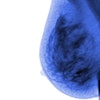Ongoing studies that seek to map the breast milk ductal system in women and find ways of easily obtaining cells from the ducts could result in finding cancer cells long before evidence is seen in a mammogram, according to researchers.
"What we now call early detection of breast cancer is not early detection," said Susan Love, MD, a best-selling author on the topic of breast health and an adjunct professor of surgery at the University of California, Los Angeles. "We know that breast cancer begins to develop in the milk ducts eight to 10 years before it appears on a mammogram."
Love said her research seeks to clarify the anatomy of the milk ducts and to develop a reliable, noninvasive technique to retrieve cells from the ductal lining. She presented initial findings last week at a breast cancer research meeting in Atlanta, sponsored by the U.S. Department of Defense.
In her study, Love collected data on 424 nipples from 219 lactating women. "We used breast-feeding women because it was easy to see the openings in the nipple," Love said. She said that on average, a woman has six to nine ducts in each breast, and each duct has its own pattern.
In essence, Love said the duct-mapping portion of the study showed that the breast is not one organ, but rather is a series of connected ductal organs. The drainage pathways of these ducts do not correspond to regular quadrants, but radiate outward from the nipple orifice in a pattern somewhat like a meandering river.
Love also said she developed a system for retrieving cells from the ducts utilizing a 0.5 mm double-lumen catheter. The catheter is inserted a few millimeters into the nipple until it reaches a tiny sphincter muscle that prevents milk from leaking without stimulation. A fluid then is introduced into the double lumen catheter, which washes the length of the duct drainage system. The cells are then collected and examined by a pathologist.
By Edward Susman
AuntMinnie.com contributing writer
June 14, 2000
Let AuntMinnie.comknow what you think about this story.
Copyright © 2000 AuntMinnie.com


















